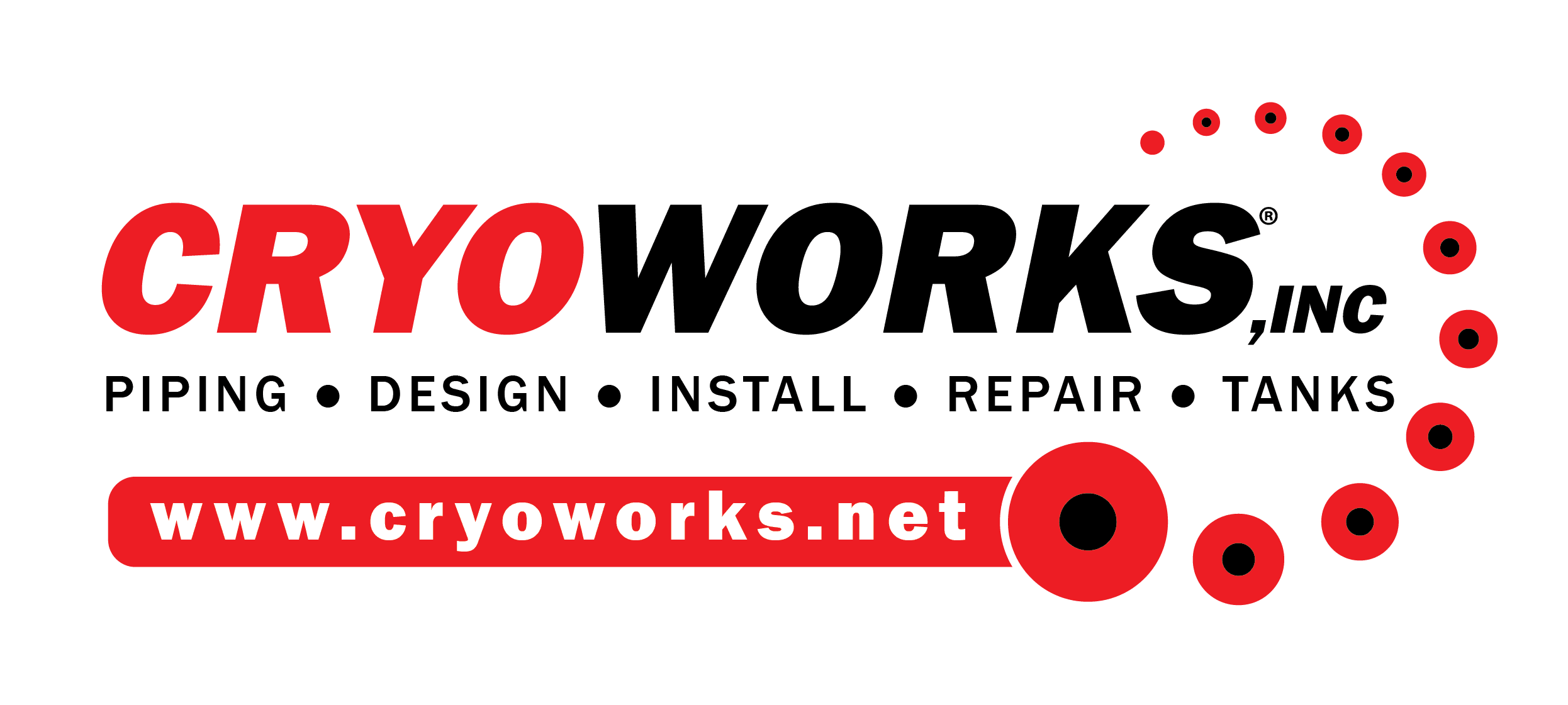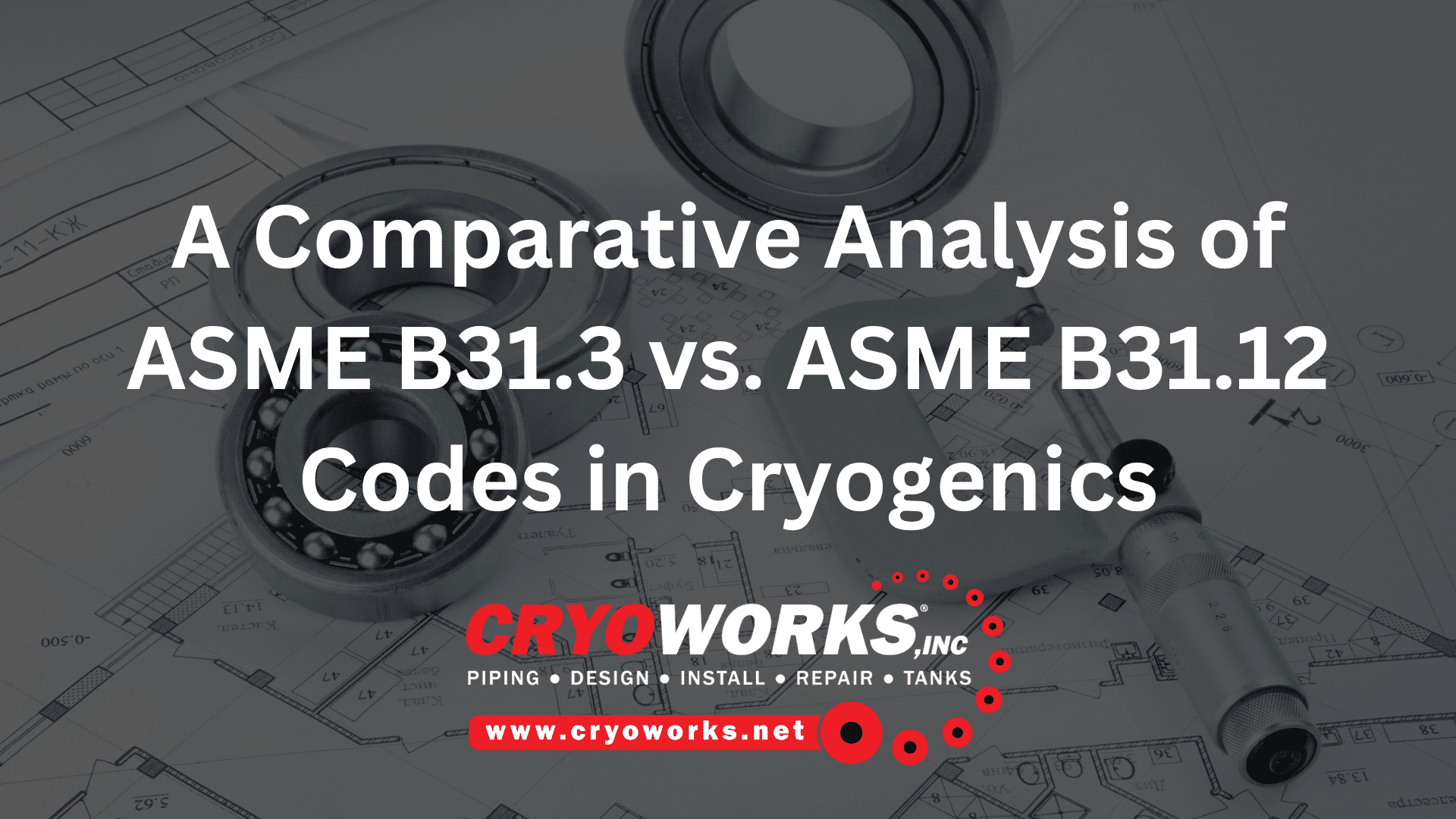Note: Exclusive to Cryogenic Fluids only and is not meant to be a comprehensive exhaustive review. For complete details, please reference the individual ASME codes.
In Engineering, especially in the realm of cryogenic piping systems, adherence to standardized codes set by The American Society of Mechanical Engineers (ASME) is not only a best practice but often a contractual requirement. The most common code for piping system design and construction is ASME B31.3. Since its introduction in 1935, it has guided North America and most of the world in the safe manufacture and use of process piping in engineering companies, equipment manufacturers, energy, aerospace, and many other industries. ASME B31.3 is used daily, often referenced, and well understood.
On the other hand, with the energy transition, and the surge of interest in hydrogen, the seldom-used ASME code, B31.12 – Hydrogen Piping and Pipelines has suddenly been pushed into the light. For owners and operators looking for a reliable green energy source, hydrogen has leaped forward as the fuel choice, propelling the future of a hydrogen economy, especially among industry sectors of trucking, public transportation, aviation, power, and many others that attempt to electrify using unreliable traditional alternative energy sources, such as wind and solar. Combined with limited exposure outside the refining and aerospace industries, many engineers and designers are now seeking help in de-coding the B31.12 standard.
Fortunately, for those involved in producing equipment for or using cryogenic fluids, B31.12 shares similarities with the more well-known ASME Code B31.3. To help our customers in exploring the new and exciting energy frontier, CryoWorks has undertaken an analysis comparing the two standards. Below is a brief overview of the similarities and differences between ASME B31.3 and B31.12, focusing on their application in cryogenic service.
Quality System Requirements
ASME B31.3: No set requirement for a quality system is stated within ASME B31.3.
ASME B31.12: In contrast, ASME B31.12 requires a quality system and details the requirements within the code. To be compliant with the requirements in this section, it is an industry best practice for each organization to have a certified ISO 9001 quality management program in place.
Engineering and Material Considerations
When considering cryogenic service, the selection of suitable materials is limited. Both codes allow the use of S304/L and S316/L, without a preference between them for hydrogen service.
Engineering – Min Pipe Thickness Under Internal Pressure Calculation
Both use an almost identical formula to calculate the minimum thickness under pressure. The only difference between the two codes is one term in the denominator.
ASME B31.3: Uses the value W or weld strength reduction factor. In stainless steel, W = 1.
ASME B31.12: In place of W, B31.12 uses M(F) – Material Factor for Hydrogen Service. For commonly used stainless steels in cryogenic service, like S304 or S316, M(F) = 1.
Materials – Traceability
ASME B31.3: No explicit requirement for material traceability.
ASME B31.12: Material Test Report (MTR) traceability to the individual component is required.
Materials – Impact Testing
Either S304/L or S316/L can be used down to –425°F without impact testing provided the material is in the solution annealed condition is the same for both codes.
Welding and Non-Destructive Examination (NDE) Requirements
Both codes reference ASME Sec. IX welding code and use the same procedures for the fluid service.
Welding – Impact Testing
Both B31.3 and B31.12 require toughness testing/charpy impact testing on weld samples of P8 materials (Example: S304/L and 316/L), and result in a minimum lateral expansion greater than 0.015 inches (0.38 mm).
NDE – Examination Requirements
Both B31.3 and B31.12 require a Non-Destructive Examination (NDE) of finished pressure boundary welds. However, they differ in the classification of production piping and welding as well as the extent to which NDE is performed.
ASME B31.3: Focuses on the fluid service (i.e., Normal Service, Severe Cyclic Service, etc.)
Normal Fluid Service:
- VT – 100% All Welds
- RT – 5% Butt-welds
- PT – 0% Fillet Welds
Severe Cyclic Service:
- VT – 100% All Welds
- RT – 100% Butt-welds
- PT – 100% Fillet Welds
ASME B31.12: Establishes delineation between pressure class (i.e.: 150LB Class, 300LB class).
Up to Class 150:
- VT – 100% All Welds
- RT – 5% Butt-welds
- PT – 10% Fillet Welds
Above Class 150:
- VT – 100% All Welds
- RT – 10% Butt-welds
- PT – 20% Fillet Welds
NDE – Acceptance Criteria
Acceptance criteria is a big topic that should be well understood by the NDE operator and company Certified Welding Engineer (CWI). In general, the acceptance criteria for B31.12 for VT, RT, and PT are the same as the acceptance criteria for Severe Cyclic Service in B31.3.
Pressure Testing
Both B31.3 and B31.12 codes require a hydrostatic or hydrostatic-pneumatic pressure test at 1.5 times the Maximum Allowable Working Pressure (MAWP), adjusted for the maximum design temperature. Similarly, both codes allow for pneumatic testing at 1.1 times the Maximum Allowable Working Pressure (MAWP), adjusted for the maximum design temperature.
CryoWorks Meets Code!
While ASME B31.12 and ASME B31.3 share commonalities, they still exhibit differences in their requirements, particularly in quality systems, the extent of NDE required and acceptance criteria for the NDE performed. Some of the differences that are relevant to our product have been illustrated in this paper. Other differences exist and a thorough review of the codes is recommended for your specific application. Understanding these differences is essential and allows CryoWorks engineers and project managers to navigate the complexities of code compliance and ensure the safe and reliable use of our cryogenic piping systems.
Contact CryoWorks to get started on your Cryogenic Piping System that meets the Code!




